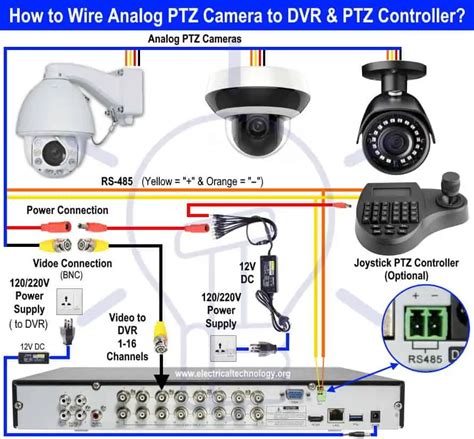How Do Wired Security Cameras Get Power
Ronan Farrow
Apr 04, 2025 · 3 min read

Table of Contents
How Do Wired Security Cameras Get Power? A Comprehensive Guide
Wired security cameras offer a robust and reliable surveillance solution, but understanding their power source is crucial for effective installation and maintenance. This guide delves into the various ways wired security cameras receive power, addressing common questions and concerns.
Powering Your Wired Security Cameras: The Basics
Unlike wireless cameras reliant on batteries or rechargeable power packs, wired security cameras draw power directly from a power source via a cable. This cable typically provides both power and video transmission, simplifying setup and ensuring a consistent power supply. The method of powering your camera depends on factors such as its location and the overall security system design.
1. Power over Ethernet (PoE): The Most Common Method
Power over Ethernet (PoE) is the most prevalent power delivery method for wired security cameras. This ingenious system transmits both power and data over a single Ethernet cable, eliminating the need for separate power cables. A PoE injector or PoE switch is needed; these devices convert standard Ethernet power into the higher voltage required by the camera.
Advantages of PoE:
- Simplified Installation: Fewer cables mean less clutter and easier installation, particularly in hard-to-reach areas.
- Cost-Effective: Eliminates the need for separate power adapters and cables.
- Centralized Power Management: PoE switches allow for centralized management and monitoring of power to multiple cameras.
Disadvantages of PoE:
- Requires PoE-compatible equipment: Both the camera and the networking equipment must support PoE.
- Cable Length Limitations: While advancements extend the range, there are still limitations on how far the power can travel over a single cable.
2. Direct Power Supply: A Traditional Approach
Some wired security cameras utilize a direct power supply through a separate power adapter. These cameras have a dedicated power input port, usually accepting a standard voltage such as 12V DC. The power adapter plugs into a standard wall outlet.
Advantages of Direct Power Supply:
- Compatibility: Works with cameras that don't support PoE.
- Simplicity: Easy to understand and implement, especially for smaller systems.
Disadvantages of Direct Power Supply:
- Increased Cabling: Requires a separate power cable in addition to the video cable, increasing complexity and potential for clutter.
- Less Efficient: Not as power-efficient as PoE, especially when powering multiple cameras.
3. Hybrid Systems: Combining Methods
In larger or more complex security systems, you might encounter hybrid systems, combining both PoE and direct power supply methods. This is often the case when some cameras are in close proximity to power outlets while others are located further away and require PoE for convenience.
Choosing the Right Powering Method for Your Needs
The optimal powering method depends on several factors:
- Number of Cameras: For a large number of cameras, PoE switches offer superior management and efficiency.
- Location of Cameras: Hard-to-reach locations benefit greatly from the simplified installation of PoE.
- Budget: PoE can save on cabling costs in the long run.
- Existing Infrastructure: If you already have a PoE-capable network, leveraging it makes sense.
Troubleshooting Power Issues in Wired Security Cameras
If your wired security camera isn't receiving power, check the following:
- Power Source: Ensure the power supply is functioning correctly.
- Cable Connections: Inspect all cable connections for proper seating and damage.
- PoE Settings: If using PoE, verify that the PoE injector or switch is properly configured and providing power.
- Camera Settings: Check the camera's settings to ensure that it's properly configured to receive power.
By understanding the various ways wired security cameras receive power and troubleshooting common issues, you can ensure a reliable and effective security system. Remember to choose the power delivery method that best fits your needs and budget, contributing to a secure and well-maintained surveillance network.
Featured Posts
Also read the following articles
| Article Title | Date |
|---|---|
| How Hard Is It To Rebuild A Th350 Transmission | Apr 04, 2025 |
| How Far From Road To Hunt | Apr 04, 2025 |
| How Is Community Coffee Decaffeinated | Apr 04, 2025 |
| How Do You Make Cinnamon Pickles | Apr 04, 2025 |
| How Does A 4x4 Vacuum Actuator Work | Apr 04, 2025 |
Latest Posts
Thank you for visiting our website which covers about How Do Wired Security Cameras Get Power . We hope the information provided has been useful to you. Feel free to contact us if you have any questions or need further assistance. See you next time and don't miss to bookmark.
